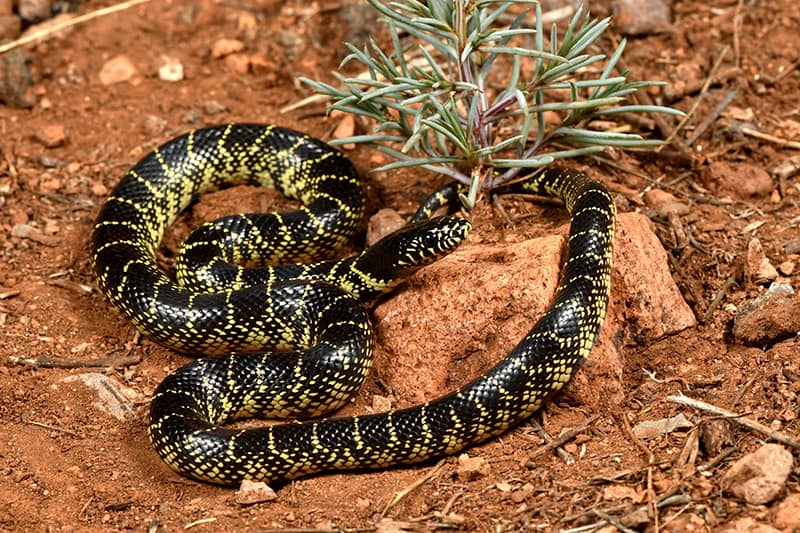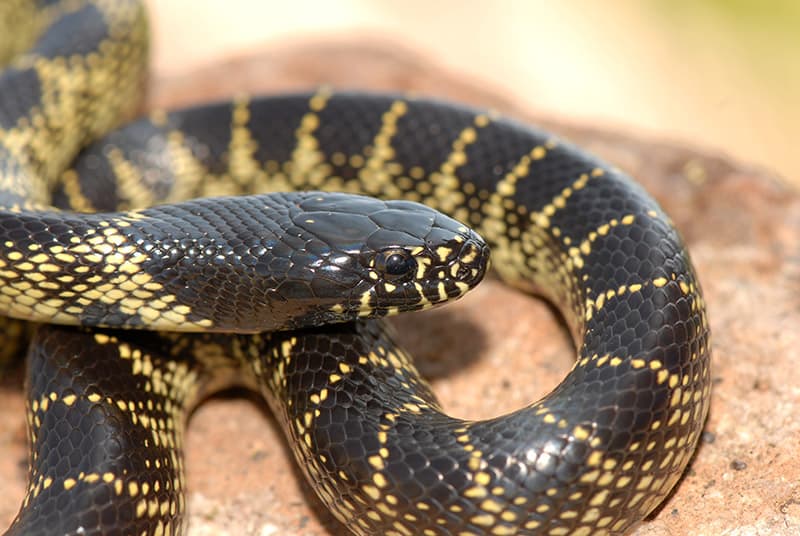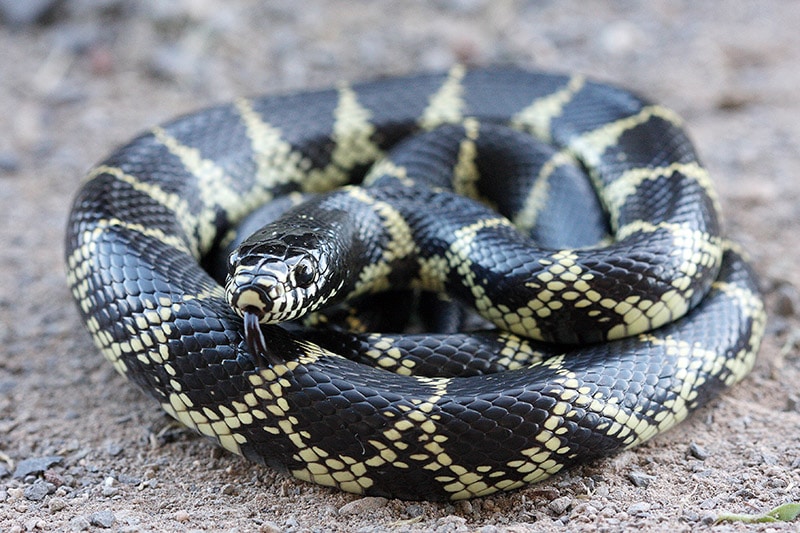Now here’s a “snake with an attitude”. This guy isn’t taking any guff from anybody!
The Arizona Desert Kingsnake however, does makes an excellent pet. With regular handling they are very gentle and docile. Being easy to feed and very hardy, the kingsnake is a favorite for both the beginner and the experienced herptologist.
- For more information on keeping Snakes see: Guide to a Happy, Healthy Herp
Arizona Desert King Snake
Scientific Classification
| Kingdom: | Animalia |
| Phylum: | Chordata |
| Class: | Reptilia |
| Order: | Squamata |
| Family: | Colubridae |
| Genus: | Lampropeltis |
| Species: | getula splendida |
Distribution
The Arizona Desert Kingsnakes are found in North America. Specifically they are found in the southern part of the United States in Arizona and sometimes just across the border in California.

Description
The Arizona Desert Kingsnake is a beautifully colored snake with a speckled black and yellow patterning. With its smooth scales and fairly slender body it is not only lovely to look at, but a pleasure to hold. The Arizona desert kingsnake can reach up to six feet long in the wild. In captivity they generally only reach three to four feet.
Feeding
They are a constrictor and their diet consists of rodents, birds, other snakes and lizards(and their eggs). Feed once or twice a week, depending on the size of the food and the size of the snake. As you get to know your snake, you’ll learn what its feeding needs are. Fresh water in a shallow dish should always be available.
Environment
One of the most important things to keep in mind with a kingsnake is that it is a carnivore and will eat other snakes. They must be housed separately except when they are being bred!
The Arizona desert kingsnake needs to be housed in an arid or desert type terrarium, just as its name implies. See the desert terrarium set-up described under Basic Reptile and Amphibian Care for more information. The terrarium needs to be a 20-gallon size or larger and the snake will need a hiding place and a small water dish.
Temperature and Lighting requirements:
They do well at 72° to 88° F in the daytime, and 67° to 72° F at night. Full spectrum lighting is important for your snakes well being and its long-term maintenance. You can use a substrate heating device for basic heating. For additional heat, you can add a low wattage full spectrum incandescent daytime bulb and a blacknight bulb or red incandescent bulb for nighttime heating. Be sure you use a thermometer so you don’t let the terrarium become overheated!
- For more detailed information see the Basic Reptile and Amphibian Care: Housing

Breeding/Reproduction
These snakes, if not babies, need to be probe sexed for positive sex identification. They are egg layers, and will lay up to 24 eggs that hatch in about 10 weeks. The hatchlings are only about four inches long!
Availability
The Arizona Desert Kingsnake and many other varieties of kingsnakes are generally available as pets due successful captive breeding.
Featured Image Credit: Viktor Loki, Shutterstock
